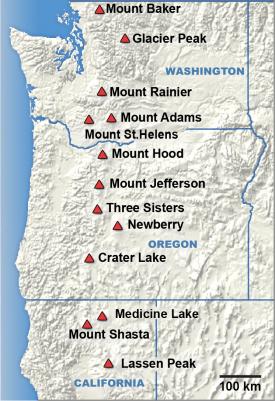This week I visited the Cascade Range in Northern America,
which extends from South Western Canada through the North Western US into
California. The mountains are formed by the converging force of the Pacific and
North American plates. The stress produced by the subduction of the Pacific
plate compresses the North American plate side and uplifts the area into the
mountain ranges that are present now.
 |
| Source: https://www.bpa.gov/news/newsroom/Pages/BPAs-participation-in-Cascadia-Rising-exercise-featured-in-NWPPA-Bulletin.aspx |
As is typical of dip-slip faults, the friction and resulting
heat create volcanoes that form in a parallel line to the fault. The Cascade Range
is home to several well-known volcanoes, such as Mount St. Helena, Mount Rainier
and several others. These fault lines are reverse or thrust faults, since the stress is a compression force. Faults are the dominant stress feature across the Range.
 |
| Source: https://volcanoes.usgs.gov/observatories/cvo/cascade_volcanoes.html |
No comments:
Post a Comment